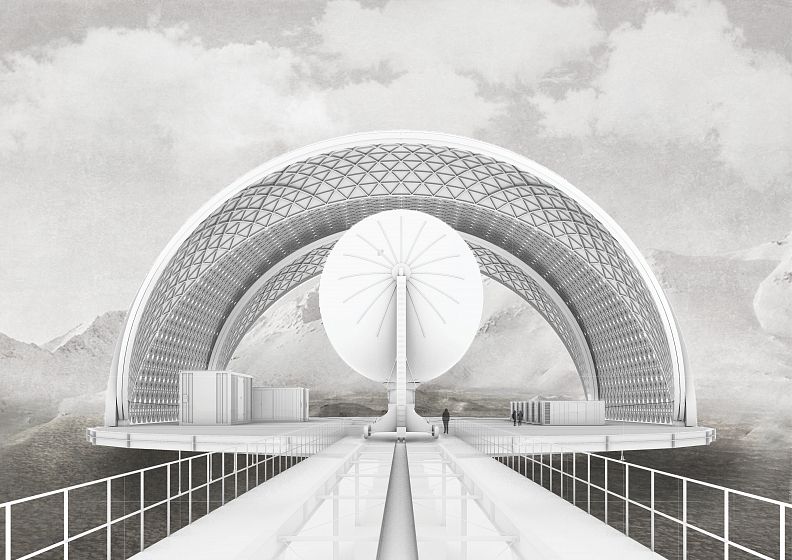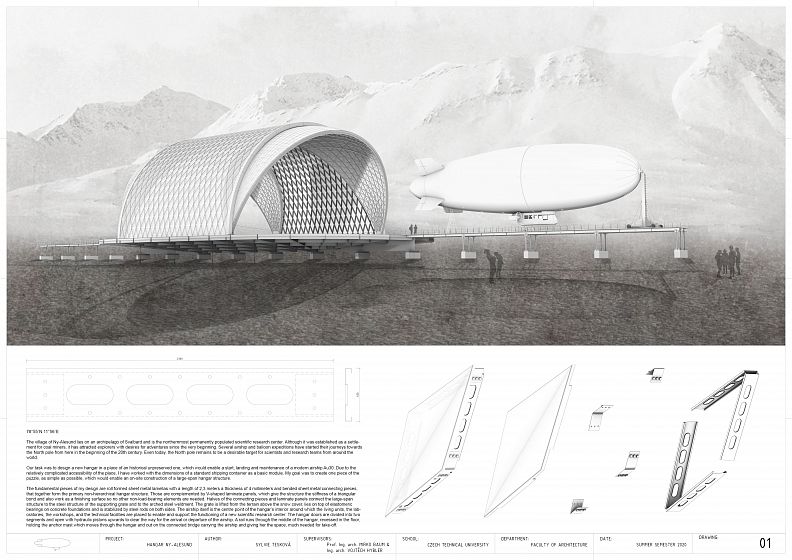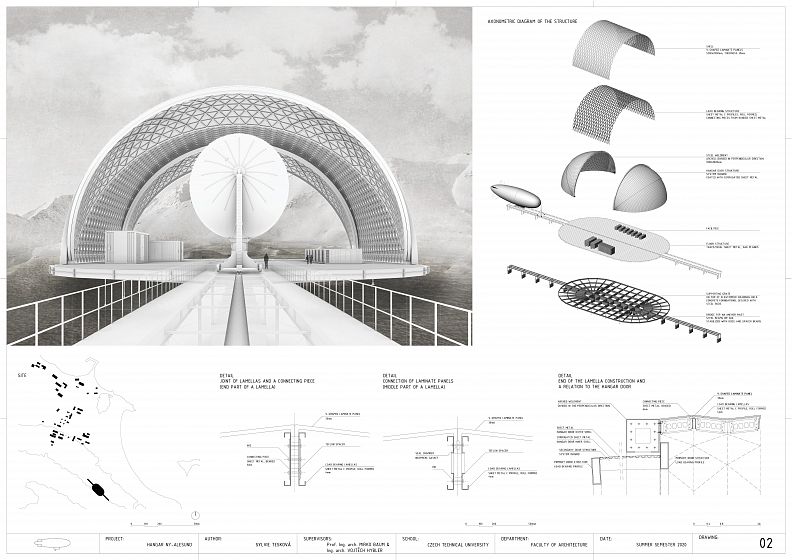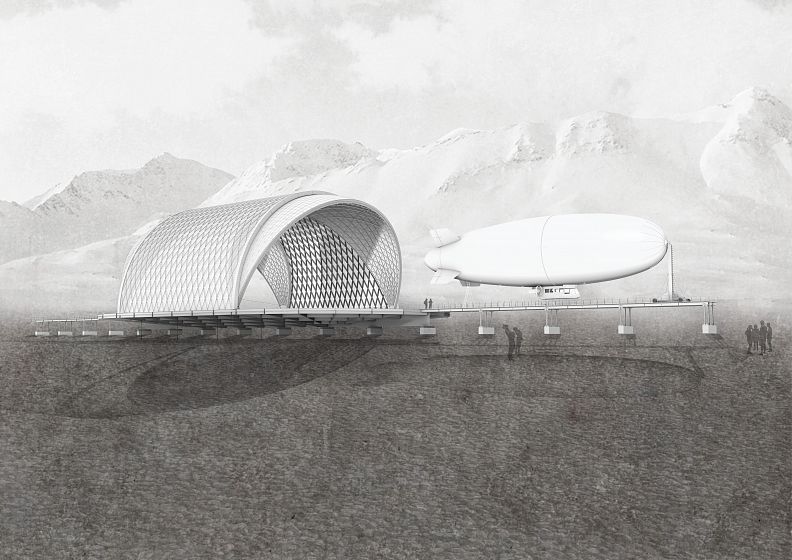Hangar, Ny-Ålesund

Project idea
The village of Ny-Alesund lies on an archipelago of Svalbard and is the northernmost permanently populated scientific research center. Although it was established as a settlement for coal miners, it has attracted explorers with desires for adventures since the very beginning. Several airship and balloon expeditions have started their journeys towards the North pole from here in the beginning of the 20th century. Even today, the North pole remains to be a desirable target for scientists and research teams from around the world.
Our task was to design a new hangar in a place of an historical unpreserved one, which would enable a start, landing and maintenance of a modern airship Au30. Due to the relatively complicated accessibility of the place, I have worked with the dimensions of a standard shipping container as a basic module. My goal was to create one piece of the puzzle, as simple as possible, which would enable an on-site construction of a large-span hangar structure.
Project description
The fundamental pieces of my design are roll formed sheet metal lamellas with a length of 2,3 meters a thickness of 4 millimeters and bended sheet metal connecting pieces, that together form the primary non-hierarchical hangar structure. Those are complemented by V-shaped laminate panels, which give the structure the stiffness of a triangular bond and also work as a finishing surface so no other non-load-bearing elements are needed. Halves of the connecting pieces and laminate panels connect the large-span structure to the steel structure of the supporting grate and to the arched steel weldment. The grate is lifted from the terrain above the snow cover, lies on top of elastomeric bearings on concrete foundations and is stabilized by steel rods on both sides.
The airship itself is the centre point of the hangar’s interior around which the living units, the laboratories, the workshops, and the technical facilities are placed to enable and support the functioning of a new scientific research center. The hangar doors are divided into two segments and open with hydraulic pistons upwards to clear the way for the arrival or departure of the airship. A rail runs through the middle of the hangar, recessed in the floor, holding the anchor mast which moves through the hangar and out on the connected bridge carrying the airship and giving her the space, much needed for take-off.
Technical information
The fundamental pieces of my design are roll formed sheet metal lamellas with a length of 2,3 meters a thickness of 4 millimeters and bended sheet metal connecting pieces, that together form the primary non-hierarchical hangar structure. Those are complemented by V-shaped laminate panels, which give the structure the stiffness of a triangular bond and also work as a finishing surface so no other non-load-bearing elements are needed. Halves of the connecting pieces and laminate panels connect the large-span structure to the steel structure of the supporting grate and to the arched steel weldment. The grate is lifted from the terrain above the snow cover, lies on top of elastomeric bearings on concrete foundations and is stabilized by steel rods on both sides.


















